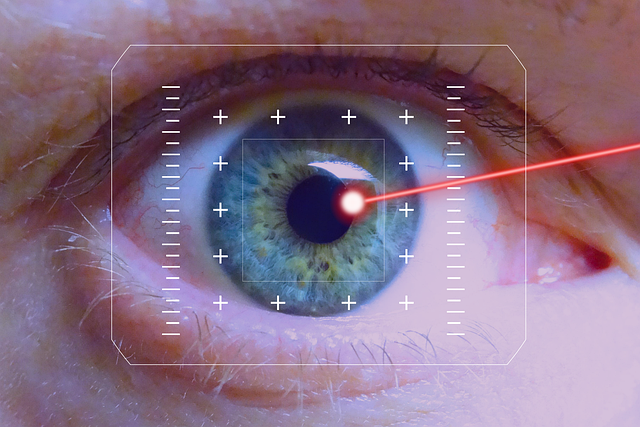The world of visual display has undergone a profound transformation over the past decade. Where once the crispness of a picture was measured solely by its size, today we judge it by a complex interplay of pixels, colors, and processing algorithms. At the heart of this evolution lies the science of image representation, the discipline that turns raw data into the stunning visuals we enjoy on our televisions, monitors, and beyond.
From Analog to Digital: A Brief History
Early television sets relied on analog signals, where the brightness of each pixel was encoded as a continuous voltage. The human eye was, fortunately, forgiving of minor inconsistencies, so the perceived picture quality was acceptable for the technology of the time. With the advent of digital broadcasting, image representation shifted from continuous waveforms to discrete samples—pixels. This change unlocked unprecedented precision, allowing manufacturers to dictate exactly how each shade should appear.
- Analog signals: continuous intensity, limited resolution.
- Digital signals: quantized values, enabling pixel-level control.
- Digital storage: image representation became more reliable and scalable.
Pixel Density and the Quest for Sharpness
When consumers talk about “1080p” or “4K,” they refer to the number of pixels across a display’s horizontal axis. However, the sharpness of an image depends not only on pixel count but also on pixel density—how many pixels fit into a given inch. This is often measured in pixels per inch (PPI). The higher the PPI, the less visible individual pixels become, creating a smoother visual experience.
“A screen with a high pixel density delivers a more detailed image representation, especially when viewed up close,” explains display engineer Maria Chen.
While televisions typically trade pixel density for screen size—due to physical constraints—monitors have benefited from a steady increase in both resolution and PPI, leading to clearer text, sharper graphics, and more immersive gaming.
Color Representation and the Expanding Gamut
Pixels do more than just hold brightness; they encode color through combinations of red, green, and blue subpixels. Over time, display panels have expanded their color gamut—the range of colors a screen can produce—beyond the traditional sRGB space to encompass wider standards such as DCI-P3 and Rec. 2020. A broader gamut allows image representation to mimic the subtle variations found in natural scenes, giving viewers richer, more vibrant visuals.
The Rise of Advanced Display Technologies
Modern image representation relies on a suite of display technologies, each with unique strengths. Below we explore the most prominent among them.
- LCD (Liquid Crystal Display): The most common type of panel, LCDs use a backlight to illuminate liquid crystals that modulate light. Their brightness and color fidelity make them suitable for both large TVs and professional monitors.
- OLED (Organic Light Emitting Diode): OLED panels generate light themselves, enabling true blacks and higher contrast ratios. The self-emissive nature of OLEDs also improves response times, crucial for fast-paced content.
- MicroLED: A newer contender, microLED combines the self-illuminating benefits of OLED with greater brightness and longevity. Each pixel is a microscopic LED, leading to exceptional color accuracy and energy efficiency.
- Quantum Dot: Quantum dot technology enhances existing LCD panels by adding a layer of semiconductor nanocrystals that emit precise colors when excited. This boosts brightness and expands the color gamut without the need for a new panel architecture.
High Dynamic Range (HDR) and Brightness
HDR is a game-changer for image representation. By allowing for a wider range of luminance—from deep shadows to bright highlights—HDR adds depth and realism to visuals. The standardization around HDR10, Dolby Vision, and HLG ensures compatibility across devices, enabling content creators to craft richer experiences.
The Role of GPUs and Upscaling Algorithms
Even with the highest resolution panels, the content we consume may not always match the display’s native resolution. This mismatch necessitates scaling, or upscaling, to adapt lower-resolution content to higher-resolution screens.
- Traditional Upscaling: Linear and cubic interpolation methods that stretch pixels. These approaches can introduce blur.
- AI-Based Upscaling: Machine learning models analyze surrounding pixels to predict missing details. Modern GPUs now incorporate neural network-based upscaling to deliver sharper, more accurate image representation.
- Temporal Upscaling: By considering multiple frames over time, these algorithms can produce smoother motion and reduced flicker.
High-performance graphics cards are now integral to achieving real-time upscaling that is virtually indistinguishable from native resolution, especially for gaming and VR applications.
Future Directions: 8K, 16K, and Beyond
While 4K has become the new baseline for mainstream TVs, the next frontier is 8K and even 16K displays. Though bandwidth and content availability remain challenges, the technology for such high-resolution panels is already in production. Additionally, lightfield displays and holographic projections are under active research, promising true 3D image representation that does not rely on glasses or special screens.
“We’re approaching a point where the number of pixels per inch will surpass what the human eye can resolve at normal viewing distances,” notes Dr. Alan Reyes, a leading researcher in display science.
When this threshold is crossed, improvements in image representation will shift from increasing pixel counts to enhancing color depth, refresh rates, and latency.
Environmental Considerations
As display technology advances, sustainability has become a critical concern. Energy consumption, particularly for high-brightness panels, can be significant. Innovations such as microLED, which offers superior efficiency, and advanced power management in GPUs, help mitigate environmental impact while delivering top-tier image representation.
Conclusion: The Art and Science of Image Representation
From the early days of analog transmission to today’s AI-powered upscaling and quantum dot enhancements, the journey of image representation has been a blend of engineering prowess and artistic vision. Each leap—from LCD to OLED, from 1080p to 4K, from static color gamuts to dynamic HDR—has pushed the boundaries of what we can see and experience on our screens.
As we look toward the future, the convergence of higher resolutions, advanced color spaces, and smarter processing promises a visual landscape that is ever more lifelike and immersive. For consumers and creators alike, the quest for superior image representation remains at the core of display technology’s evolution, ensuring that the next generation of televisions and monitors will not just show pictures, but will truly bring them to life.




